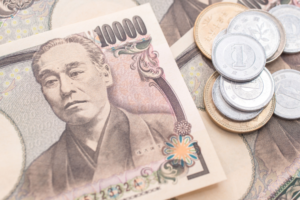
By YAO23 @ Shutterstock.com
Mohamed El-Erian suggests that Japan’s policy of yield curve control will inevitably be ended. So how long can it last? He writes in the Financial Times:
After occupying a central role in international trade and currency developments in the 1980s and 1990s, Japan’s influence on the global economy and markets gradually declined. “What happens in Japan stays in Japan” became the mantra for many. But this could change if the Japanese authorities do not prepare well for what increasingly looks like an inevitable exit from its “yield curve control” policy.
YCC is a monetary policy regime introduced in 2016 under which the Bank of Japan caps a key longer-term interest rate by buying bonds when the market yield tests that level. By capping this, and by influencing short-term bond yields through the setting of benchmark policy rates, the central bank seeks to stimulate growth and counter deflation.
Whatever your views on the effectiveness of YCC (and this is subject to debate), rising yields around the world make it hard to maintain the policy without intensifying collateral damage and unintended consequences. This has included a rapidly depreciating currency, large central bank foreign exchange interventions, and recurrent stress in market functioning for Japanese government bonds (including days with little if any trading).
The longer Japan sticks with YCC in the current global context, the more the authorities will have to spend to resist a depreciation, and the greater the structural damage to the core of the country’s financial system.
No wonder most observers expect Japan to have to exit this policy — a view reinforced by higher inflation and the mounting wage demands from the major labour unions. When it comes to the timing of this, the consensus forecast is after the second five-year term of the current governor, Haruhiko Kuroda, ends in March of next year. If correct, this gives the Japanese authorities months to prepare for what is an inherently tricky policy manoeuvre.
Time and time again, history has shown that exiting a protracted fixed price regime is full of complexities, whether it involves the currency, interest rates, or domestic prices and subsidies. This is particularly true when the peg in question has already caused multiple distortions.
We should expect a good part of the Japanese interest rate structure to move significantly higher when YCC is removed. The impact would be particularly acute for the domestic large holders of Japanese government bonds who, long confident in the longevity of the interest rate cap, had found ways to leverage their “safe asset” holdings in order to increase returns.
Read more here.
